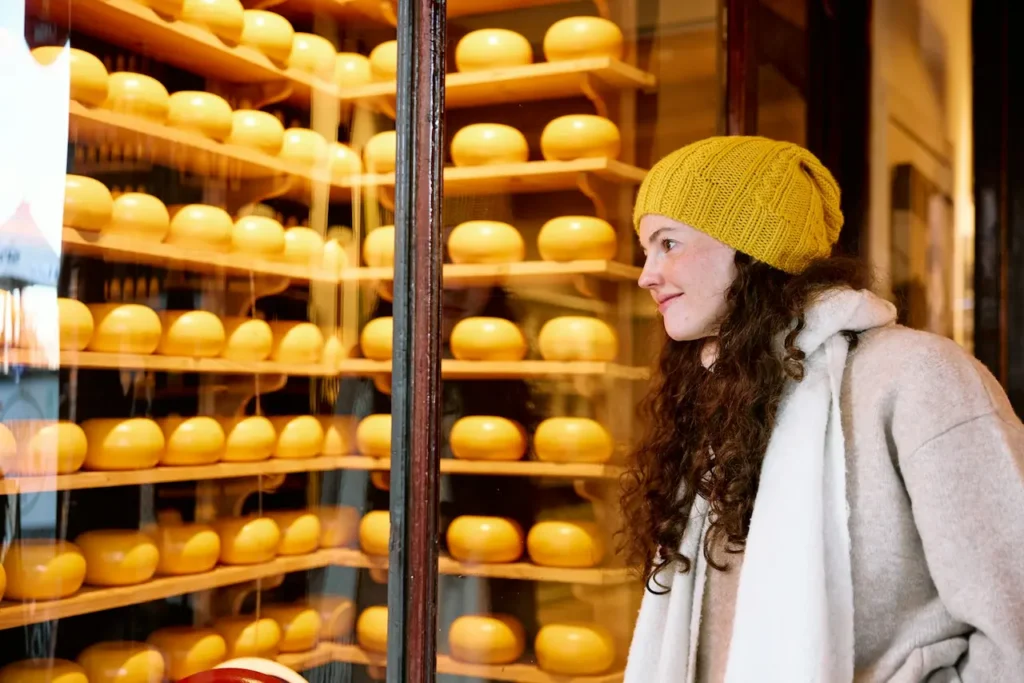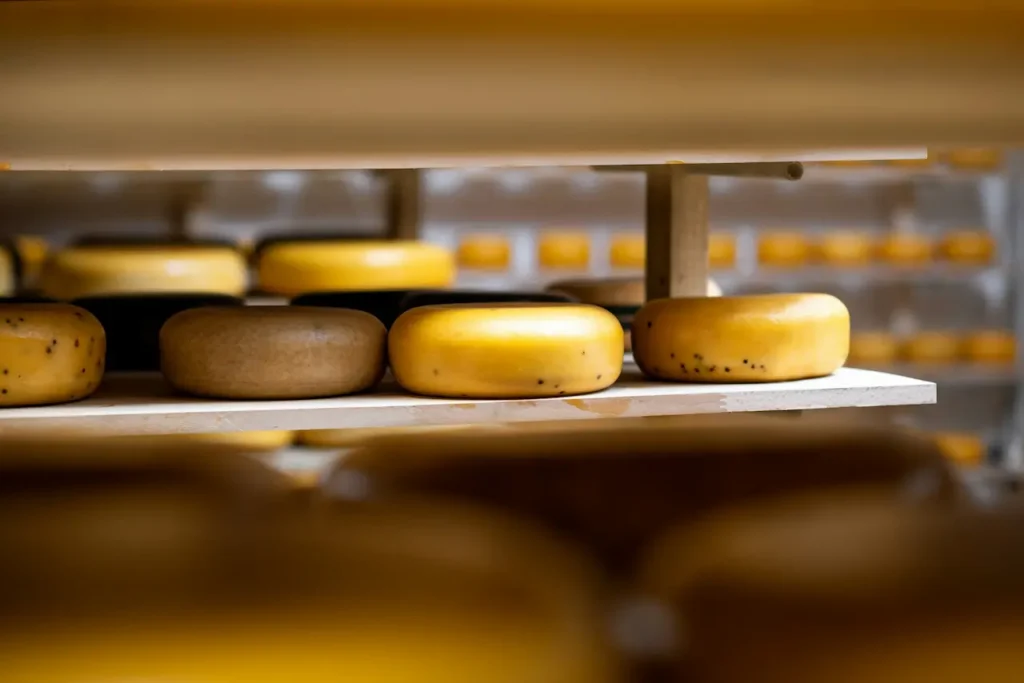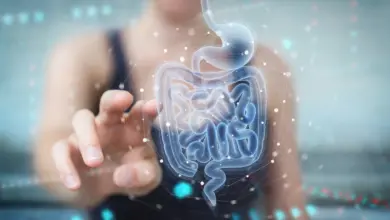Have you ever wondered is cheese really addictive? When I start ripping into my favourite cheese, I certainly struggle to stop.
Picture this: a bubbling skillet of brie, oozing with perfection, or a stringy, golden slice of pizza that makes your heart skip a beat. Cheese has a way of captivating us, turning even the most disciplined eaters into devotees. But why is cheese so irresistible? Is it the flavor, the texture, or something deeper—something downright addictive? Let’s dive into the fascinating world of cheese and what makes it one of the most crave-worthy foods on the planet.
The Cheese Whisperer: Why It Feels So Good
Cheese isn’t just delicious; it’s a mood booster with a biochemical twist. The secret lies in casein, a protein found in milk and concentrated during the cheesemaking process. When you eat cheese, your body breaks down casein into peptides called casomorphins, which interact with opioid receptors in the brain. These receptors are linked to feelings of pleasure and reward. Think of casomorphins as cheese’s way of saying, “You’re welcome!”
Jennifer Silver, an Alberta-based dietician, explains that while casomorphins don’t pack the same punch as narcotics like morphine, their effect is still significant. “They have opioid-like properties,” she notes, “and can release dopamine, the feel-good neurotransmitter, giving you comfort and pleasure.”
Cheese, in essence, is engineered by nature to make you happy. This may explain why it’s so hard to resist a gooey slice of pizza or a creamy brie slathered on a cracker.

Want to read about stomach repair and peptides? Read: What Is The Peptide For Stomach Repair?
Cheese: Nature’s Comfort Food
Cheese’s addictive allure isn’t new. Dr. Neal Barnard, author of The Cheese Trap, has long compared cheese to “dairy crack.” He explains that the cheesemaking process removes liquid whey, concentrating the casein—and thus, the casomorphins—into a more potent form. The result? A food that’s comfortingly rich and biologically rewarding.
But it doesn’t stop there. Cheese also contains phenylethylamine, an amino acid that can create feelings of euphoria. Kam Talebi, CEO of The Butcher’s Tale restaurant, describes it as the “ultimate feel-good food.” Whether you’re indulging in melty mozzarella or sharp cheddar, cheese seems to have mastered the art of seduction.
Cheese and Evolution: A Match Made in Survival
Our love affair with cheese might also have evolutionary roots. Kumar, a genetics and wellness researcher, explains that cheese’s dense nutrient profile could explain our innate attraction. Packed with proteins, fats, vitamins (A, D, and B12), and minerals like calcium, cheese is a powerhouse of sustenance.
“In difficult conditions,” Kumar notes, “the mood-enhancing properties of casomorphins may have provided survival benefits, helping humans cope with stress or scarcity.” From an evolutionary standpoint, cheese wasn’t just food; it was fuel for the body and mind.
Hard cheeses, such as parmesan and cheddar, take this effect to the next level. These varieties have higher concentrations of casomorphins, potentially delivering an even stronger dopamine release. It’s no wonder these cheeses are often at the top of everyone’s “must-eat” list.

Melty, Gooey, Irresistible: Why Texture Matters
Cheese isn’t just about flavor—it’s also about texture. Melted cheese, in particular, has a way of making any dish feel indulgent. Whether it’s a fondue, mac and cheese, or a grilled cheese sandwich, the stretch and creaminess of melted cheese are undeniably satisfying.
Kam Talebi highlights that melting cheese changes its structure, making it easier for our bodies to digest and absorb nutrients. “Heating cheese enhances its appeal,” he explains. “It transforms the flavor and texture, elevating the dining experience.”
This explains why melted cheese often feels like the ultimate comfort food. It’s not just tasty—it’s soothing.
Do you have gut issues? Read: Loss of Gut Microbiome
Cheese Addiction: Myth or Reality?
The idea that cheese is addictive has sparked debate. A 2015 study published in Public Library of Science examined foods associated with addictive behaviors. Unsurprisingly, cheese ranked high, alongside pizza and cheeseburgers. The study noted that foods high in fat and with rapid absorption rates are more likely to trigger problem eating.
While these findings grabbed headlines like “Cheese is as Addictive as Drugs,” scientists caution against drawing direct comparisons. A 2021 feature from Houston Methodist Hospitals clarified that there’s no concrete evidence to suggest cheese has the same addictive properties as drugs like cocaine or heroin.
“Food cravings aren’t the same as addictions,” the article stated. “Cravings are influenced by a combination of biology, psychology, and environment.”
So while cheese might not turn you into a character from Requiem for a Dream, its unique chemistry can still make it incredibly hard to resist.
Why Some People Aren’t Cheesy Fans
Not everyone shares the same enthusiasm for cheese. Some individuals may find it unappealing due to genetics or cultural influences. For instance, certain populations have historically consumed less dairy, which may explain lower cheese consumption in those regions.
Additionally, some people are genetically predisposed to be lactose intolerant, which can make cheese an uncomfortable choice. Despite its pleasures, cheese isn’t for everyone, and that’s okay.

The Rise of Vegan Cheese: A Dairy-Free Alternative
For those looking to cut back on dairy without sacrificing the joy of cheese, vegan options are booming. Chef Miyoko Schinner, founder of Miyoko’s Creamery, has been at the forefront of crafting plant-based cheeses that mimic the taste and texture of dairy.
Her vegan pizza cheese, for example, starts as a liquid but emerges from the oven gooey and stretchy, just like the real thing. “It’s fascinating how hard it is for people to give up cheese,” Schinner says. “But we’re creating alternatives that are just as satisfying.”
Vegan cheeses are typically made from cultured nuts, soy, or tapioca starch. While they don’t contain casomorphins, their flavors and textures are designed to deliver the same comfort and indulgence.
Cheese: A Culinary Love Story
Cheese has woven itself into the fabric of cuisines worldwide. From the bubbling raclette of Switzerland to the pumpkin-colored mimolette of France, every culture has its cheesy signature. For many, cheese isn’t just food—it’s an experience.
I still remember a cozy night at a London restaurant aptly named The Cheese Bar. We ordered gouda puffs, mac and cheese, and baked brie with bacon jam, much to the gentle warning of the bearded man at the counter who thought we’d overdone it. He underestimated us. By the end of the night, I felt euphoric, almost invincible.
That’s the magic of cheese. Whether shared with friends or savored alone, it has a way of elevating the moment.
Read our latest blog: How Putting Your Hands In Soil Helps Gut Microbiome
The Takeaway: Cheese, in Moderation, Is Bliss
While cheese might not be scientifically addictive, it’s undeniably captivating. Its unique blend of taste, texture, and chemistry creates an irresistible pull for many. Whether you’re indulging in a gooey grilled cheese or savoring an aged gouda, cheese can be a source of joy and comfort.
At Brain & Gut Health, we understand the role food plays in our overall well-being. While cheese can bring happiness in moderation, balance is key. Pair your favorite cheeses with nutrient-rich whole foods, and enjoy the best of both worlds—a happy brain and a healthy gut.
So, is cheese addictive? Maybe not in the strictest sense, but its power to delight is undeniable. Let’s just say cheese knows how to keep us coming back for more. Pass the brie!

